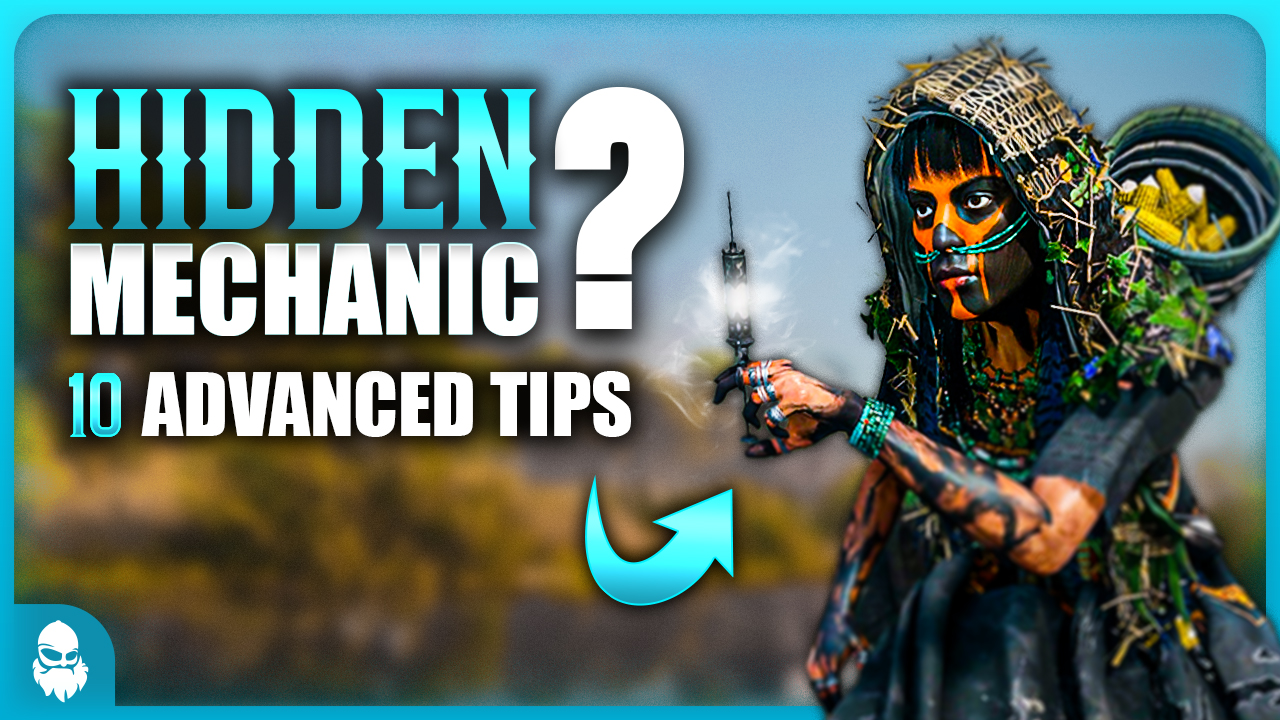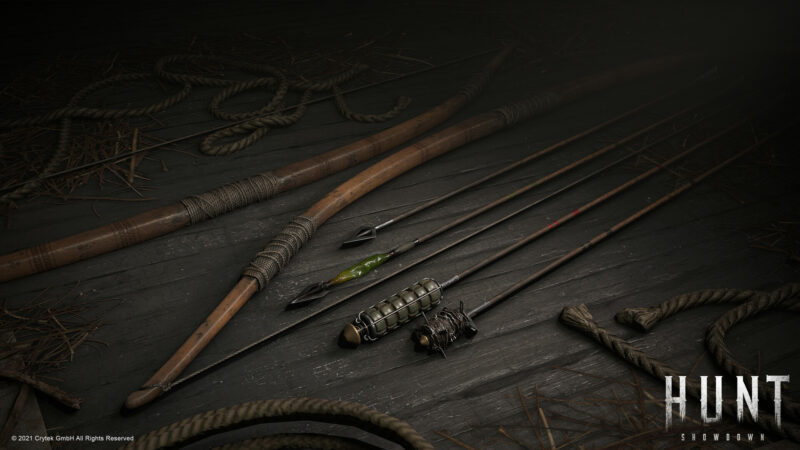
10 Tips & Mechanics Only Advanced Players Use In Hunt: Showdown 1896
Hi guys, REX here! Whether you’re a seasoned player or pushing into higher MMR, mastering Hunt’s deeper mechanics gives you a serious edge. Here are 10 advanced tips and strategies to help you win more fights, make smarter plays, and catch your enemies off guard. Number 6 will probably surprise you, but without further ado- let’s dive into it.
Number 1. Cycle Reloading
Some weapons in Hunt perform partial reloads, meaning they’ll eject a chambered round every time you reload — unless the weapon is completely empty.
This includes rifles like the Mosin-Nagant or the Specter shotgun, which have reload systems that always eject the current round when starting a reload. If you’re not careful, this mechanic will easily lead to wasting a lot of ammo.
To avoid this, you can hold the trigger after firing to keep the bolt or action open, then press reload to insert a new round before cycling it closed.
Alternatively, you can just tap reload immediately after firing, as both methods avoid wasting a live round.
If you want to reload freely without worrying about it, just take the Bulletgrubber trait. It lets you catch the ejected round mid-air and put it back into your ammo pool, saving every bullet.
If you decide to hold off on reloading to conserve rounds, that works too — but it means you’ll be stuck with less ammo loaded and could end up reloading mid-fight, which isn’t ideal.
Number 2. Ammo Stacking & Weapon Looting
Ammo in Hunt: Showdown is tied to specific types, and weapons will share the same ammo pool if the ammo type is an exact match.
For example, a compact ammo primary and a compact ammo secondary will share ammo only if they both use regular ammo, or they both use the same special ammo type.
Each weapon has a total ammo capacity, which is split between what’s loaded in the weapon and what’s stored as spare ammo. You can see this clearly in the item details menu.
Take the Sparks for example — it only loads one bullet at a time, but it gives you a large spare ammo pool. That makes it great for stacking extra long ammo for another weapon.
Then you’ve got something like the Mosin Obrez Extended, which holds a lot of rounds in the gun itself — 15 total — but still gives you 10 spare bullets on top.
So if you equip the Obrez alongside, say, a Mosin-Nagant Avtomat, you can carry up to 25 rounds total just by having the Obrez in your loadout. That’s a big deal for the Avto, which burns through ammo fast and doesn’t have a big ammo pool itself to begin with.
You can also loot ammo from weapons on the ground, even without picking them up permanently. If you switch to a weapon that shares your exact ammo type, then switch back, you’ll automatically take any spare bullets it had — up to your own max ammo capacity.
For example: if your Avtomat is missing 10 rounds and you swap to a fully stacked Sparks on the ground, then back again — you’ll now have those 10 extra rounds added to your ammo pool.
Mastering how ammo stacking and weapon looting works means fewer reload problems and way more flexibility in extended fights — especially when using high-consumption weapons like the Avto.
Number 3. Explosives & Fire Mechanics
A recent update made a big change to how explosives behave in Hunt — and it opens up some crazy new tactics.
Now, explosives will instantly detonate if they come into contact with fire. That means you don’t have to wait for the fuse — the explosion is immediate.
For example, if you throw a dynamite stick directly at a lamp, it’ll break the lamp, ignite a fire, and then instantly detonate the dynamite.
You can also shoot a lantern to create a fire on the ground, then throw an explosive into the flames — it’ll blow up as soon as it touches the fire.
Another option is to throw a fire bomb first, then follow it up with your explosive. As long as there’s fire on the ground, your explosive will trigger on impact.
And yes — this even works with flares. Tossing an explosive right onto an active flare will trigger it immediately. It’s fast, brutal, and most players don’t expect it.
Using fire to set off your explosives lets you surprise enemies and score kills where the fuse timer would be too long to score a kill. It’s an excellent way to catch people off guard, and a ton of fun as well!
Number 4. Predicting Repeeks
Repeeking is one of the riskiest habits in Hunt — but it’s also one of the most predictable.
We all do it sometimes: take a shot, land a hit, and instantly peek again, hoping to finish the kill. But if the enemy knows you’re going to repeek, it’s an easy way to get dropped yourself.
Here’s the thing — most players can’t resist going for the follow-up after they land that first hit. They know their opponent is low, and they’re confident that one more shot will finish the job.
You can use that to your advantage. If you get tagged but you’re not at immediate risk of dying — and you’re confident in your aim and reaction time — instead of running for cover, just hold the angle. Nine times out of ten, they’re going to repeek. And when they do, you’ll be ready with a clean headshot.
It’s a risky play, but when you pull it off, it completely flips the fight — and punishes players for being too aggressive after landing a shot.
Try it in your next match. You’ll be surprised how often it works — especially at higher MMR where players get greedy for quick kills.
Number 5. Medkit Mechanics
A lot of players, especially newer ones, make the mistake of stopping burning or bleeding first, then healing afterward. But that wastes time — and leaves you vulnerable with low health longer than necessary. Instead, just use a medkit.
Medkits will automatically stop burning or bleeding and heal you in one action. It’s faster, cleaner, and gets you back in the fight much sooner.
If you’ve taken the Physician trait, the medkit heals even faster — which makes this even more effective during hectic fights. And if you combine that with Surefoot, you can sprint while using the medkit — allowing you to heal, remove status effects, and run for cover all at the same time.
This combo lets you break line of sight, avoid follow-up shots, and recover while repositioning — which is a huge advantage compared to standing still and manually stopping the bleed first.
Get used to reacting with the medkit instantly — it’s faster, safer, and the smartest way to stay alive under pressure. On a sidenote, good keybinds go a LONG way, and I’ve covered all of that in my settings guide if you’re interested!
Number 6. Recovery Shots Restore Bars AND Remove Status Effects
Recovery shots are usually thought of as just a way to restore one missing health chunk — but there’s a hidden mechanic that most players completely miss.
When you use a recovery shot to bring back a lost health bar, it will also remove any active status effects at the same time.
That includes bleeding, poison, and even burning — as long as you’re restoring a missing chunk, the effect is instantly cleared.
It’s a really clutch option if you’re burning, bleeding, and under pressure — instead of scrambling to stop the effect, just pop a recovery shot and get both health and relief in one action.
It’s a subtle mechanic, but one that can buy you crucial seconds when everything’s going wrong — and most enemies won’t expect you to bounce back that fast.
Number 7. Beetle Tactics
Stalker beetles are way more dangerous than most players realize. Each one deals 50 damage and causes both bleeding and poison, which not only adds tremendous pressure — but also prevents healing while the poison is active.
If you run the Pain Sense trait, you’ll see the outline of any hunter your beetle hits, making it much easier to land a follow-up beetle and secure the kill. And yes — triple stalker beetles can absolutely wipe a hunter in seconds. Just keep in mind that beetles will detonate each other if they explode too close together.
You can also turn a beetle into a flying bomb. Throw a sticky bomb onto a stalker or fire beetle and fly it at an enemy. If you detonate the beetle early, it will set off the sticky bomb instantly, skipping the usual fuse and usually scoring a kill. This is also possible with the choke beetle, but since it creates a choke cloud when it explodes you’ll have to let the fuse run its course instead!
You can use the same trick to heavily damage Rotjaw from a distance before she’s alerted and goes underwater, as you can see in this clip! This can be very useful if you’re under pressure and need to kill her quickly without exposing yourself to enemy teams.
And finally, beetles now support Remedy. Normally, Remedy lets you use dark sight to fully heal your team when interacting with another trait spur. With a beetle, you can now use Remedy remotely, keeping your hunter completely safe while still triggering the full team restoration.
Beetles aren’t just for recon anymore — they’re damage dealers, utility tools, and healing support all in one.
Number 8. Satchel Strategies
Dark dynamite satchels are basically massive dynamite bundles with a huge blast radius, and they can be triggered remotely through dark sight. You can stick them to almost any surface, making them incredible versatile and deadly!
A recent update made them nearly silent, which makes them incredibly hard to detect — unless your enemy has the Vigilant trait. And honestly, in the current meta, Vigilant is almost a must-pick just because of this.
One of the best ways to use satchels is to hide one under a dead body. If the enemy team goes for the revive, you detonate it — and usually take out the reviver, or both players.
To make this even stronger, grab the Witness trait. It shows dead hunters in dark sight, and when the orange marker vanishes, it means they’ve been revived. That’s your cue to blow up the satchel.
You can also use satchels offensively by placing them in window frames. This lets you blast players inside buildings without ever having to enter — and I’ve had a ton of success with this tactic, which you’ll see in the background here.
You can also combine satchels with alert trip mines to create a proximity-triggered landmine. Anyone who walks through the wire sets off the whole thing — great for traps around bodies, doors, or extracts.
But the most disgusting use I’ve found? Stacking a huge number of satchels in a key area — and then using a beetle to detonate them when the enemy team walks by. In this clip, my team and I planted 11 satchels at Hideout, waited for enemies to push in, and I used a beetle to trigger the satchels one by one. The result? Multiple kills in a row — and they never saw it coming.
Satchels reward creative thinking. If you’re smart with placement and patient with timing, they can end fights before they even begin.
Number 9. Door Mechanics
Doors in Hunt might seem simple — I mean… they’re doors. Come on.
But… There’s actually a lot more to them than what meets the eye.
By default, doors open away from you — which is what most players are used to.
But the direction a door opens is actually based on your movement input when you interact with it.
If you’re standing still or moving forward, the door will open outward, away from you.
But if you’re moving backward when you press interact, the door will open toward you.
This gives you more control over how you enter or peek a compound — and it can even save your life.
If you know or suspect that there are traps set up just behind the door, opening it toward you lets you reveal and disarm them safely without triggering anything.
You can also control the speed and noise when opening a door. Crouching opens doors slowly and quietly, while punching or bashing them with your weapon slams them open loudly — which can be used to surprise enemies, enter more quickly or bait sound cues.
And if you want to go in loud, or remove the door completely, use a Pennyshot Derringer, a shotgun with Pennyshot, decoy fuses or explosives to blast the door open. It denies the enemy cover and forces repositioning.
Door mechanics are one of those subtle systems that, once mastered, give you a serious advantage when entering or defending a compound.
Number 10. Masking Explosives
Explosives are loud — and the sound of the fuse is one of the most obvious cues in the game. The moment someone hears it, they’re usually heading for cover or repositioning immediately.
But you can use that sound against them. If an enemy throws a dynamite or frag bomb, wait for it to explode — then time your own throw to start right as their explosion goes off. The boom will mask the sound of your fuse, making it way harder for them to react.
It’s a super effective way to catch players off guard, especially when they think the danger just passed — only to get hit by a second explosive they never heard coming.
You can also do this with your own throwables. If you’ve got more than one, throw the first to bait movement and listen for audio cues, then time the second just after the first explodes. The enemy hears one detonation — and assumes that’s it. But the real damage comes right after.
Sound masking with explosives is one of those advanced tricks that can turn a predictable tool into a deadly surprise — and in high-tier fights, that kind of edge matters.
Outro
That it’s for these 10 advanced tips to help you improve in Hunt: Showdown. Did you learn something new? Let me know in the comments, and feel free to share your own tricks too!
If you enjoyed the video, a like goes a long way, and if you want more guides, gameplay, and breakdowns like this — consider subscribing.
Thanks for watching, and until next time, I’ll see you in the bayou.


